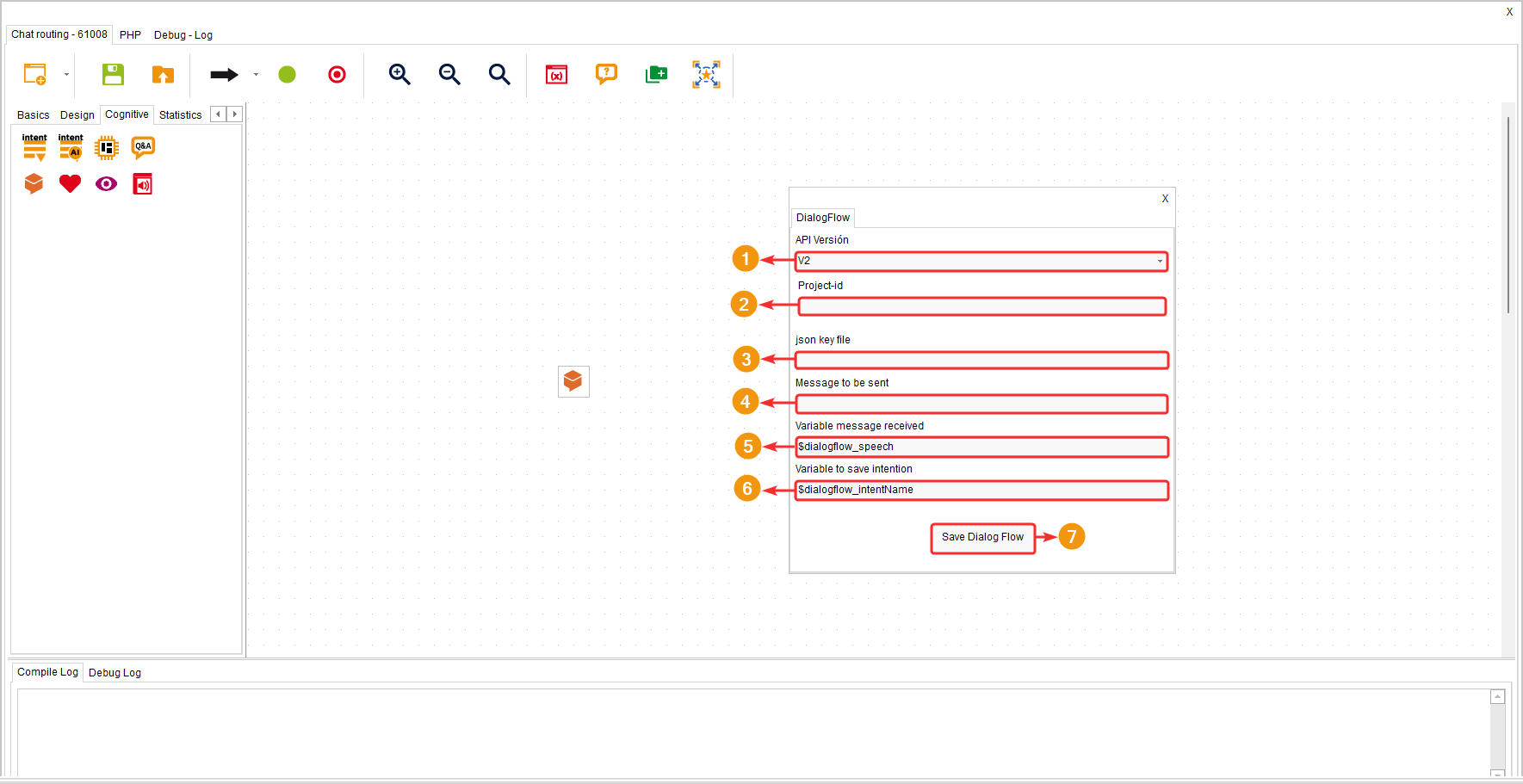This component allows the use of DialogFlow (a platform provided by Google). DialogFlow is a natural language understanding platform used to design and integrate a conversational user interface into mobile applications, web applications, devices, bots, interactive voice response systems, and more. Its development is owned by Google, and it is integrated into wolkvox through a token.
It is part of the “Cognitivos” component group and is available for routing points of type interaction, chat, and crm + webhook.
Configuration #
- Select the version of DialogFlow to use.
- Write the project identification name or project ID.
- In the “json key file” field, paste the code or key generated in the Google Cloud DialogFlow service.
- In the “Message to send” field, write the variable that contains the information to be sent to DialogFlow.
- In this box, you will find the variable that contains the message to respond to the client, which is already a predefined variable, so there is no need to change it.
- In this box, you will find the variable corresponding to the intent of the response sent by the DialogFlow platform to the client. This variable is predefined, so there is no need to change it for version 2.
- Click on “Save DialogFlow” to apply the changes.




